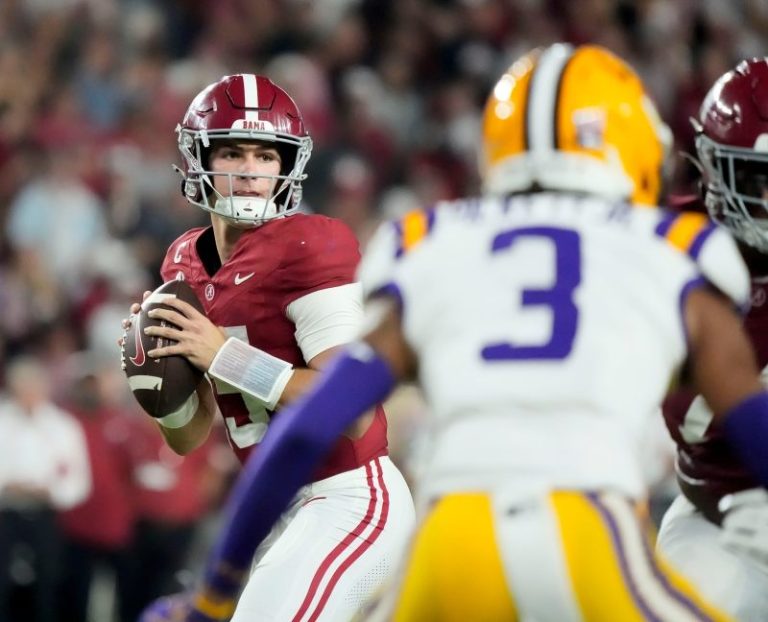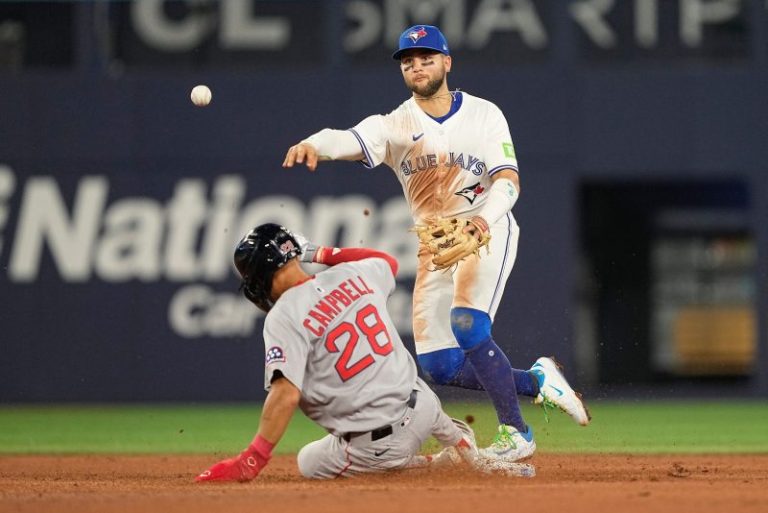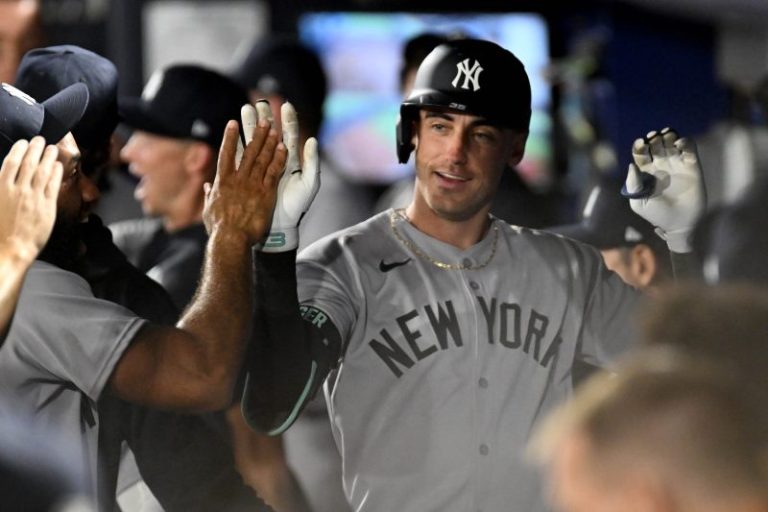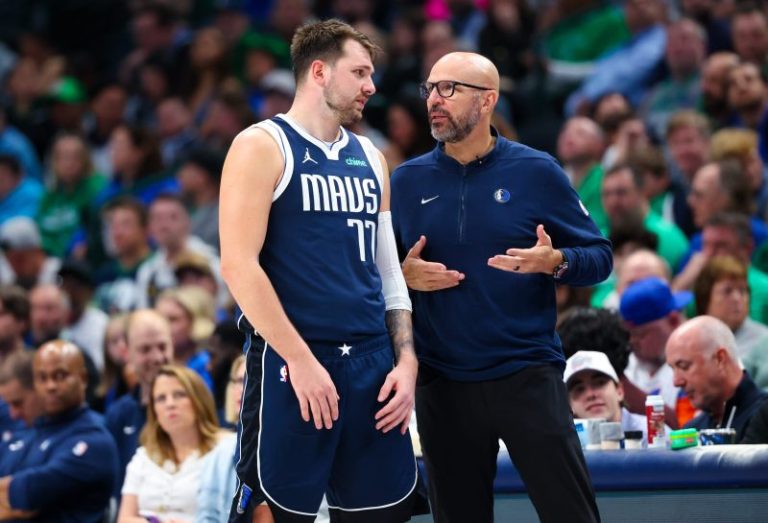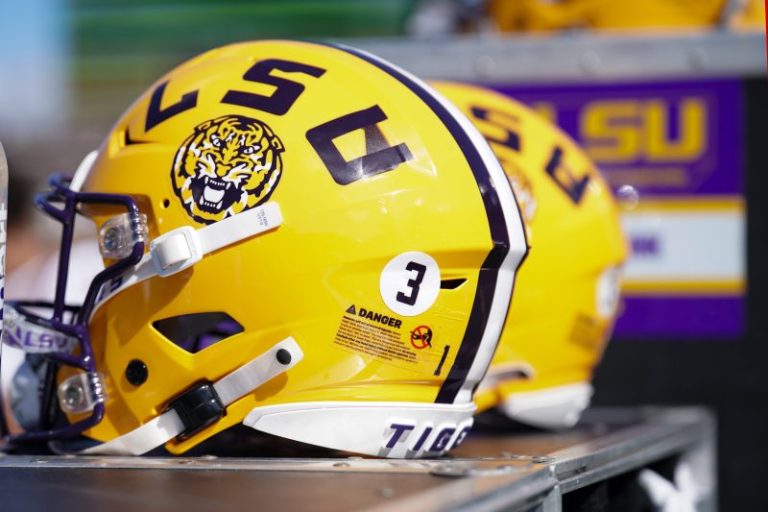- Four NFL teams currently hold multiple first-round picks for the 2026 draft.
- Indiana quarterback Fernando Mendoza is projected to be the first signal-caller selected.
- The New York Jets, holding five first-round picks over the next two years, are projected to select a quarterback with their first 2026 selection.
The rising importance of the 2026 NFL Draft for several teams came into focus after last week’s trade deadline.
With the New York Jets having dealt cornerback Sauce Gardner to the Indianapolis Colts, there are now four NFL teams that have multiple first-round picks in April. And with the Tennessee Titans and New York Giants having already fired their head coaches, several fan bases are probably ready to close the book on this season and enter offseason mode. But with the first-round order still shifting significantly week to week, there’s still ample time for team’s draft fortunes to rise or fall.
With that said, here’s USA TODAY Sports’ latest first-round projection and 2026 NFL mock draft:
2026 NFL mock draft
1. Tennessee Titans – Arvell Reese, LB/DE, Ohio State
There’s a strong possibility for Tennessee to possess the No. 1 pick in consecutive years after the Saints’ and Browns’ victories left the Titans as the only one-win team remaining. And that creates a bit of a mystery atop the order. An organization that’s yet again rebooting would clearly stand to benefit from trading back and stockpiling more early selections to support Cam Ward. Yet this quarterback class doesn’t seem particularly conducive to drumming up a bidding war for this choice. If Tennessee does end up in the slot and stands pat, it could supercharge its defense with Reese. Though he operates as a linebacker for the Buckeyes, the 6-foot-4, 243-pounder has Micah Parsons-like movement abilities that could be best put to use in a full-time edge rushing role. The Titans could pair him with Jeffery Simmons to create one of the league’s most formidable inside-outside tandems and then use the rest of the draft – and free agency – to focus on helping Ward.
2. New Orleans Saints – Fernando Mendoza, QB, Indiana
A franchise with a decades-long habit of being trigger-shy when it comes to selecting quarterbacks might be hard-pressed to go this route, especially if Tyler Shough continues to exhibit the promise he displayed in his second start. But unless the second-round rookie firmly establishes himself as New Orleans’ answer at the position in the back half of the season, Mendoza might be massively alluring. The Heisman Trophy front-runner now also figures to be the favorite to be the first quarterback taken, with his game-winning drive against Penn State highlighting resiliency and a knack for operating out of structure that otherwise hadn’t been seen often this season. The 6-5, 225-pounder is the kind of precise thrower who could allow Kellen Moore to launch a new era for the organization in earnest.
3. New York Giants – Jordyn Tyson, WR, Arizona State
The reset is officially on, with Big Blue pulling the plug on the Brian Daboll era on Monday. Still, the mission for New York remains the same: elevate Jaxson Dart’s supporting cast as quickly as possible. A well-rounded receiver who can win in a variety of ways, Tyson would complement Malik Nabers well in the top target’s return to action and allow Dart to be less reliant on leveraging his running skills to fuel the offense.
4. Cleveland Browns – Ty Simpson, QB, Alabama
The experience question might be the only thing holding back Simpson’s draft stock, but the Crimson Tide passer’s relatively abridged body of work hasn’t impeded him on the field this season. The 6-2, 208-pound signal-caller continues to look fully ready for the pros thanks to his rare composure and fast processing. That’s the kind of package that the Browns would pounce on after watching the offense spin its wheels behind Dillon Gabriel.
5. New York Jets – Dante Moore, QB, Oregon
With five first-round picks over the next two years after its pair of trade deadline blockbusters, New York has unparalleled flexibility to shape its future at the most important position in football. Gang Green therefore might not force the issue right away with the third passer off the board. But Moore is plenty talented and would allow Aaron Glenn and first-year offensive coordinator Tanner Engstrand to actually attack via the air after the offense has remained grounded with Justin Fields at the helm. Still only a redshirt sophomore, Moore might end up returning to school and vying to be the No. 1 pick in 2027. But he’s shown plenty to like, including impressive poise and a comfort attacking every level of the field as he continues to gain experience.
6. Las Vegas Raiders – Rueben Bain Jr., DE, Miami (Fla.)
This was supposed to be a season of great change for the Silver and Black, but the view from the back of the AFC West looks awfully familiar. The Raiders should know by now that there’s no cure-all for the team’s abundant ills, so they should instead simply gravitate toward the best players available. Bain has a strong case to be the top prospect in the class, as he’s been the most dominant defender in college football. If he lasts to this point, it should be a no-brainer for Las Vegas to put him opposite Maxx Crosby, who has been doing well more than his fair share to prop up this team.
7. Miami Dolphins – Caleb Downs, S, Ohio State
With a new general manager set to come aboard and Mike McDaniel’s future yet to be decided, Miami could go in a number of different directions this offseason. Whatever vision the Dolphins end up embracing for their future, though, Downs should fit it. A versatile playmaker and heady leader, the safety is capable of transforming a secondary in dire straits while also making a distinct mark for a run defense in need of serious help.
8. Washington Commanders – Keldric Faulk, DE, Auburn
Less than a year after the team reached the NFC title game, a calamitous campaign has forced Washington to face some harsh realities about the state of its roster. The Commanders’ defensive line looks overdue for a serious investment, and the 6-6, 285-pound Faulk can step in as a high-floor run stuffer with a good amount of room to grow as a pass rusher.
9. Cincinnati Bengals – Peter Woods, DT, Clemson
Outside of standout cornerback DJ Turner, Cincinnati has come up empty on its various defensive draft investments in recent years. While there might be a gaping hole on the edge once Trey Hendrickson departs as expected, the Bengals also have a glaring deficiency on the interior to address. Woods has fallen short of becoming the consistently disruptive force some envisioned him as after his first two seasons of flashes, but he’s still in a class of his own among the forthcoming defensive tackle prospects, especially when it comes to shedding blocks.
10. Los Angeles Rams (from Atlanta Falcons) – Spencer Fano, OT, Utah
Sure looks like the Falcons could be paying a hefty bill for April’s move to secure James Pearce Jr. in the back of the first round, as Atlanta is trending toward having to hand over a pick somewhere in the top 8-12 slots. The Rams’ foresight pays off massively here in the form of Fano, a talented and athletic blocker who could take over for longtime starter Rob Havenstein at right tackle.
11. Arizona Cardinals – Francis Mauigoa, OT, Miami (Fla.)
Arizona probably doesn’t need the 6-6, 315-pounder to haul in trick-play touchdowns like he did Saturday for the Hurricanes. Mauigoa’s brand of bully ball should make him sufficiently attractive for the Cardinals, with his stout protection also coming in handy to counter the NFC West’s many imposing pass rushers.
12. Dallas Cowboys – David Bailey, OLB, Texas Tech
Jerry Jones might never admit defeat in the Micah Parsons trade, and he might be reticent to push his draft chips in on another undersized edge rusher after taking Donovan Ezeiruaku in the second round in the spring. But getting quick pressure is the name of the game right now for NFL defenses, and no one in this class does it better than Bailey, who has terrorized opposing passers to the tune of 11 ½ sacks – best in the Football Bowl Subdivision – this season for the Red Raiders.
13. Baltimore Ravens – T.J. Parker, DE, Clemson
Landing impending free agent Dre’Mont Jones at the trade deadline patched up a problem that figures to persist into 2026 for Baltimore. Parker hasn’t broken through to top-tier edge rusher territory, but he can still be a disruptive and productive staple of the Ravens’ rotation.
14. Minnesota Vikings – Jeremiyah Love, RB, Notre Dame
It’s still unclear exactly what Minnesota has in J.J. McCarthy, but the young quarterback’s trajectory should leave Kevin O’Connell with a good bit of unease. It’s too early to reverse course, so bringing on the dynamic and elastic Love could help settle things down by reshaping the offense.
15. Houston Texans – Olaivavega Ioane, G, Penn State
While everything around him has collapsed at Penn State, Ioane continues to get the job done at an All-American level, letting almost nothing past him in pass protection. That’s the kind of presence Houston has long needed on its offensive front, and it shouldn’t blink at taking an interior blocker this high given how detrimental the problems along the line have been.
16. Carolina Panthers – Aveion Terrell, CB, Clemson
A passing attack that looks allergic to trying anything downfield is highly problematic for the Panthers, but Carolina needs to look from within for solutions rather than burn a third consecutive first-round pick on a receiver in hopes of resolving the issue. Terrell gets to join his brother, the Falcons’ A.J. Terrell, in the NFC South while lining up across from Jaycee Horn to accelerate the defense’s growth.
17. Kansas City Chiefs – Kenyon Sadiq, TE, Oregon
Maybe it’s time to stop trying to reconfigure the Chiefs’ receiving corps given how far down the group now finds itself on the list of Kansas City’s most pressing concerns. Sadiq, however, would be a worthy successor to Travis Kelce thanks to his dynamic pass-catching skills, and he would also elevate the floundering run game with his highlight-reel blocks.
18. San Francisco 49ers – Kadyn Proctor, OT, Alabama
The 6-7, 366-pound Proctor figures to be a polarizing evaluation in the draft due to some uneven play and a unique body type. But San Francisco needs a vision for the future at left tackle, and Proctor is sure to be a force with his powerful play.
19. Browns (from Jacksonville Jaguars) – Carnell Tate, WR, Ohio State
Cleveland should rejoice if it’s able to keep Tate in Ohio following his breakout season. It’s not often that teams can find 6-3, 195-pound receivers who exhibit advanced polish for their position while also averaging 18.2 yards per catch, much less in the back half of the first round.
20. Pittsburgh Steelers – Mansoor Delane, CB, LSU
Right now, there’s no telling where Pittsburgh will turn at quarterback in 2026 as it sees how far 41-year-old Aaron Rodgers can take the offense. While someone like South Carolina’s LaNorris Sellers could be a consideration if he declares – and is available at this point – the Steelers probably need to find clarity behind center before they come on the clock with this selection. Delane’s steadiness would make him a welcome addition to a defense that’s too often been burned when it hasn’t been able to generate pressure or spark big plays, and veteran starter Darius Slay Jr. isn’t signed beyond this season.
21. Dallas Cowboys – Jermod McCoy, CB, Tennessee
It’s unclear when, if ever, the star cornerback will make his 2025 debut for the Volunteers as he continues to rehab a torn anterior cruciate ligament suffered in January. His talent alone, however, might be enough to entice Jerry Jones, who took a risk on another talented coverage asset coming off a major injury in Shavon Revel Jr., the third-round rookie cornerback from East Carolina.
22. Chicago Bears – Cashius Howell, DE/OLB, Texas A&M
Chicago’s defense has been overly reliant on generating a league-leading 20 takeaways to mask the other major shortcomings of this unit. If the Bears are willing to get creative to jolt a pass rush that ranks 26th with a 30.9% pressure rate, according to Next Gen Stats, Howell could be an intriguing option. The Bowling Green transfer has put aside questions about his build by tapping into his quickness and bend, which has allowed him to record a Southeastern Conference-leading 10 ½ sacks.
23. Buffalo Bills – Makai Lemon, WR, USC
Brandon Beane went fishing for Jaylen Waddle prior to the trade deadline, according to NFL Network’s Tom Pelissero, but ended up with the boot that is Buffalo’s current receiving corps. If Beane is prepared to admit some level of fault on this front after repeatedly pushing back on questions of the group’s composition, he could be drawn to Lemon. The 5-11, 195-pound target doesn’t have the physical make-up of the go-to option the Bills currently lack, but the Power Four leader in receiving yards (937) serves his quarterback by freeing himself up underneath and racking up yards after the catch.
24. Tampa Bay Buccaneers – CJ Allen, LB, Georgia
The second level continues to be a stubborn issue for Tampa Bay’s defense, which can’t keep counting on 35-year-old Lavonte David to hold things together. The undersized yet aggressive Allen would be a fitting long-term answer, and he’d immediately smooth out some of the coverage issues that keep popping up.
25. Detroit Lions – Matayo Uiagalelei, DE, Oregon
The link between player and team has persisted for some time, and it likely will for a good while. Uiagalelei is exactly what Dan Campbell covets in a potential running mate for Aidan Hutchinson: persistent, powerful and savvy.
26. Los Angeles Chargers – A’Mauri Washington, DT, Oregon
For all of the problems that the Bolts are facing with their inability to safeguard Justin Herbert amid season-ending injuries to Rashawn Slater and Joe Alt, their top pick might be better spent fortifying the front on the other side of the ball. Washington offers athleticism seldom seen in a 6-3, 330-pound nose tackle, and his knack for commanding double teams and blowing up plays would change the outlook of a run defense yielding 4.9 yards per carry.
27. Rams – Colton Hood, CB, Tennessee
The Rams are getting by with cornerback Ahkello Witherspoon still on injured reserve with a broken clavicle suffered in Week 2. To truly thrive, though, the Rams should bring aboard a top cover man like Hood, who can help Los Angeles better match up with bulky wideouts.
28. New England Patriots – Denzel Boston, WR, Washington
Drake Maye is hardly hurting in the deep passing game, with his 141.4 passer rating on throws of more than 20 yards ranking second only to Sam Darnold, according to Next Gen Stats. Yet the appeal of pairing the breakout quarterback with a 6-4, 210-pound downfield dynamo in Boston might be too immense for New England to ignore.
29. Seattle Seahawks – Emmanuel Pregnon, G, Oregon
Someone check on John Schneider if he uses consecutive first-round draft picks on offensive guards after taking Grey Zabel this year. Still, this is one of the few problem areas for Seattle’s roster, and Pregnon’s forcefulness would come in handy for an offense still hoping to establish some roots in the ground game.
30. Denver Broncos – Sonny Styles, LB, Ohio State
While it’s still unclear exactly what Denver can expect from Dre Greenlaw, elevating the outlook at linebacker might be one of the few tasks left for a defense adept at smothering all comers. The 6-4, 243-pound Styles stands alone when it comes to athleticism and range among prospects at his position, making him a fun chess piece for whichever defensive coordinator lands him.
31. Philadelphia Eagles – Quincy Rhodes Jr., DE, Arkansas
If Philadelphia holds onto Jaelan Phillips by extending or re-signing the talented trade deadline acquisition, edge rusher plummets down the list of offseason priorities for the defending champs. But if the Eagles are again forced to reload, they’d be wise to take a long look at Rhodes, a tantalizing talent at 6-6 and 275 pounds who has become a mainstay in opponents’ backfields this season.
32. Jets (from Indianapolis Colts) – KC Concepcion, WR, Texas A&M
No matter who is under center for Gang Green in 2026, the passing attack can’t solely be the Garrett Wilson show. After transferring from North Carolina State, Concepcion has demonstrated he can boost any offense with his craftiness in getting open and picking up yards after the catch.

